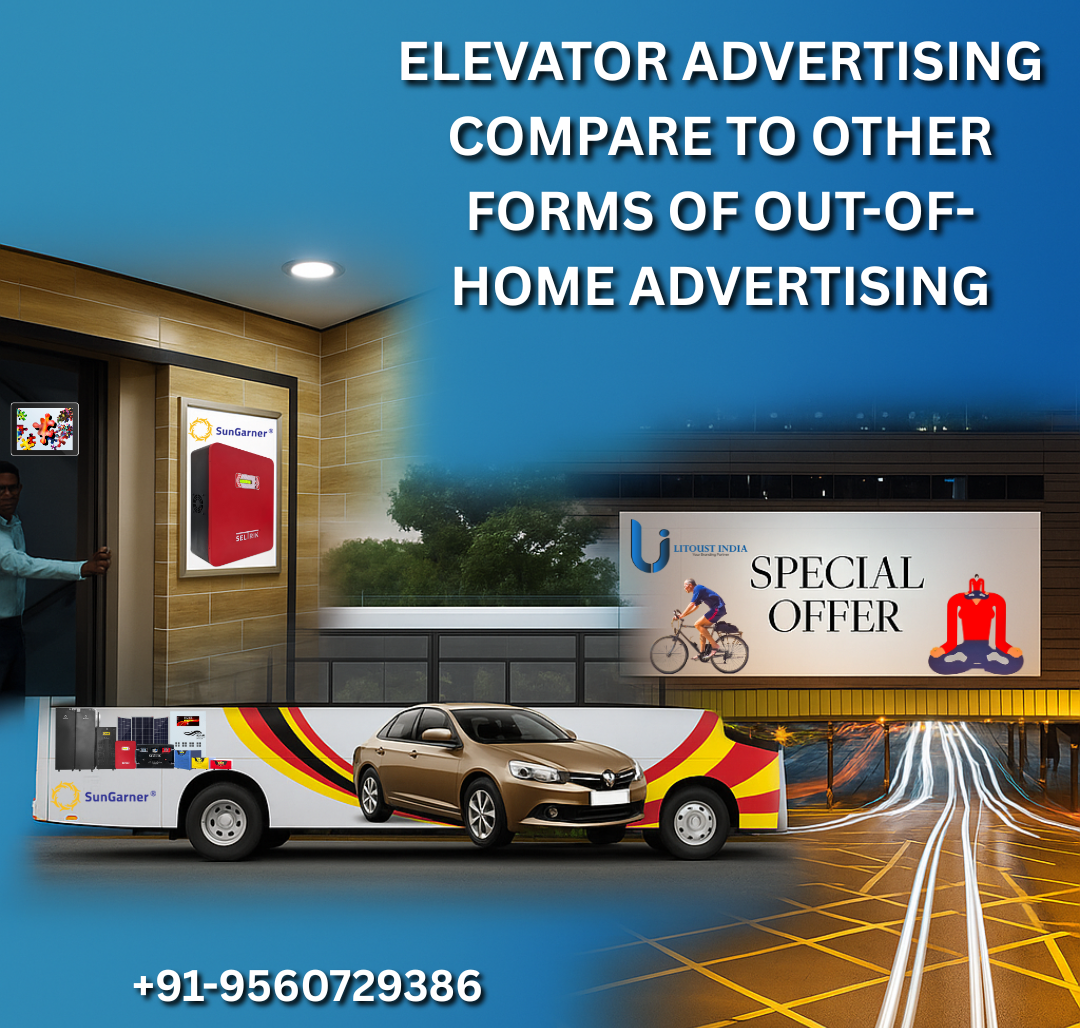
Have you ever stepped into an elevator and noticed an ad that immediately grabbed your attention? Maybe it was a slick poster, a digital screen showing a short video, or even an interactive display. Unlike billboards on the highway or ads on buses, elevator advertising has a unique way of connecting with people—and here’s why it stands out from other forms of out-of-home (OOH) advertising.
Think about it: when you’re walking past a billboard, you might barely glance at it while checking your phone or hurrying to your destination. But in an elevator, you don’t have anywhere to go for 30–60 seconds. That short ride gives advertisers a rare window of attention where your message isn’t competing with traffic or distractions.
Elevator ads aren’t just seen once—they’re part of your daily routine. Office workers, residents, and shoppers often use the same elevators multiple times a day. This repeated exposure means the message sticks, gradually building brand recall without feeling pushy.
Not all OOH ads reach the right people at the right time. Elevator ads, however, allow brands to be extremely strategic. Imagine placing a luxury watch ad in a high-end apartment lift or a software service ad in a corporate building—suddenly, the audience is perfectly suited for your product.
Small spaces can be surprisingly fun for creativity. Brands are experimenting with digital screens, motion graphics, sound, and even scents inside elevator cabins. When done right, this makes the ad feel less like a billboard and more like a mini experience that people actually enjoy.
Compared to sprawling billboards or high-frequency transit ads, elevator advertising is often more affordable and more effective for certain audiences. You pay less but get more focused engagement—something every marketer dreams about.
Elevator Ads vs. Other OOH Ads
|
Medium |
Typical Engagement |
Targeting |
Cost |
|
Billboard |
Quick glance, fleeting |
Very broad |
High |
|
Bus/Transit |
Moderate |
Medium |
Medium |
|
Elevator |
Captive, attentive |
Highly targeted |
Low-medium |
|
Digital Kiosk |
Moderate-high |
Medium-high |
Medium |
Here’s the thing: people love stories, not just products. Elevator ads give brands a chance to speak in a micro-moment, telling a story in 30 seconds or less. That human connection—seeing something clever, funny, or thought-provoking—makes all the difference.
If you’re curious about leveraging this unique medium for your brand, Litoust India offers professional solutions for elevator advertising and other OOH campaigns. Their approach combines strategy, creativity, and placement expertise to ensure your message isn’t just seen—it’s remembered.
Next time you step into an elevator, look around. That ad you notice might just be one of the most effective marketing moments of your day. Small space, big impression—it’s OOH done smartly.
Ans: Elevator advertising is a form of out-of-home (OOH) marketing where ads are placed inside or near elevators—on walls, doors, or digital screens—to reach people during short elevator rides in residential, commercial, or retail buildings.
Ans: Unlike billboards that people often pass by quickly, elevator ads reach a captive audience. Viewers spend 30–60 seconds inside an elevator with limited distractions, making them more likely to notice and remember the message.
Ans: Elevator ads can be strategically placed in corporate offices, shopping malls, hospitals, residential apartments, and hotels—anywhere with consistent footfall and frequent elevator use.
Ans: Elevator advertising is generally more affordable than billboards or transit ads while offering higher engagement rates and better targeting options. It delivers strong ROI by focusing on specific demographics in high-traffic locations.
Ans: Absolutely. Brands can tailor content based on the building type, location, and audience profile—for instance, luxury products in premium apartments or B2B services in office towers.
Ans: Formats include static posters, vinyl wraps, digital screens, motion-graphic displays, and even interactive or sensory ads that use sound or scent for deeper engagement.
Ans: For optimal recall, campaigns typically run for at least 4–8 weeks, ensuring consistent exposure among daily users.
Ans: It’s personal, immersive, and direct. In an age where people avoid online ads, elevator spaces offer undivided attention and organic brand connection—making it perfect for modern, experience-driven marketing.
Ans: Litoust India provides end-to-end elevator advertising solutions—from identifying premium locations and designing creative visuals to managing placements and performance tracking. Their data-driven approach ensures every ad delivers measurable results.
Ans: Simply visit www.litostindia.in
or contact their OOH advertising team. They’ll help you choose the right buildings, design eye-catching creatives, and launch a campaign that fits your brand goals and budget.
